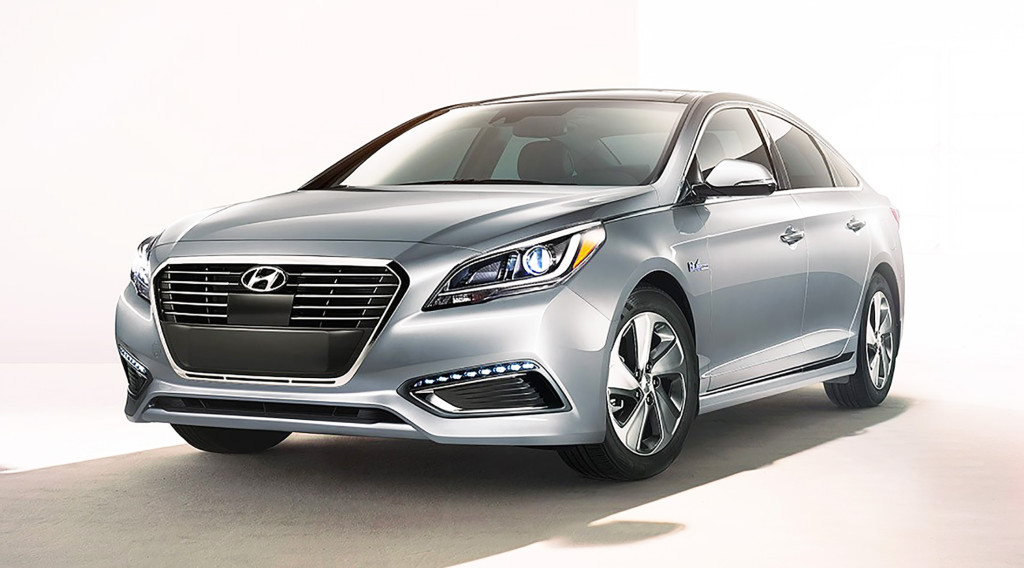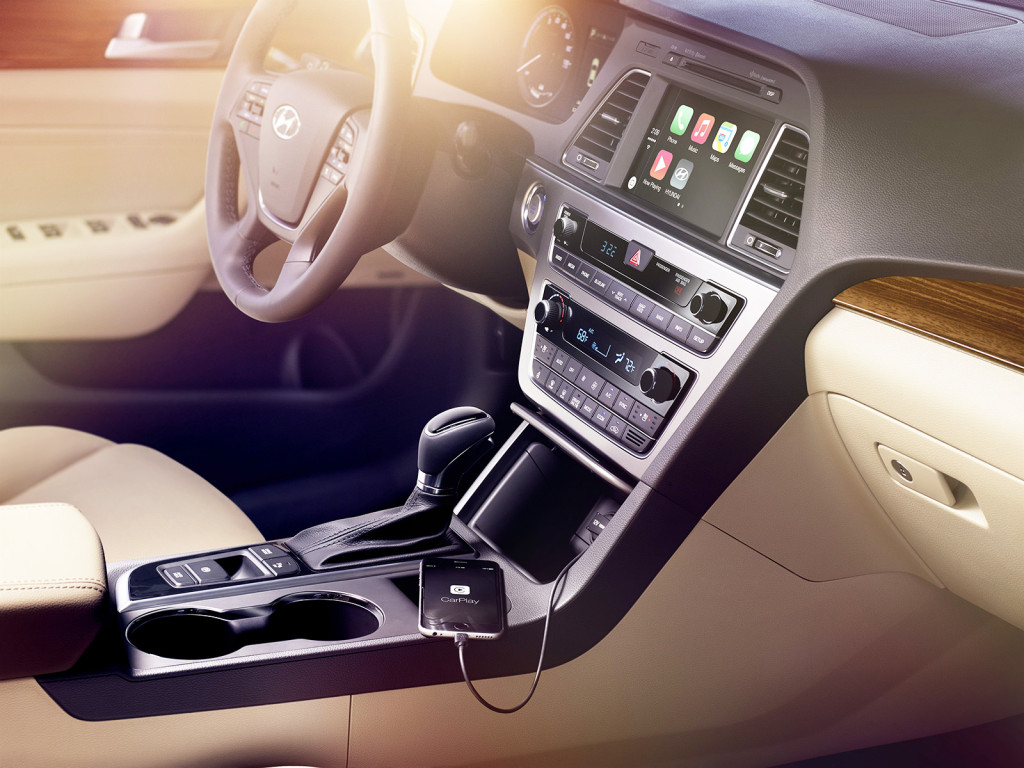Cargazing
By Derek Price
Like all automakers, Hyundai struggled a bit with its first-generation hybrid car, a gas-electric version of the Sonata.
Getting electric motors and gasoline engines to work together seamlessly is a tough engineering challenge, and you could sense that in the original Sonata Hybrid. The most glaring example was an awkward feeling from the brake pedal that never got smoothed out until the car was near the end of its product cycle.
Hyundai must have learned plenty of lessons from its first-generation hybrid, though, because an all-new generation has been introduced that improves it in virtually every area for 2016.
Not only do the brakes feel smooth as glass now — no more of the herky-jerky sensation that plagues some hybrids when their regenerative braking kicks in to charge the batteries — but it’s also one of the nicest, quietest, smoothest riding cars I’ve driven in the past 12 months. I’ve been in some Cadillacs and Lexuses recently that don’t feel this refined.

With the 2016 model, the Hyundai Sonata Hybrid is entering its second generation. It’s a much smoother, more sophisticated hybrid than its first-generation predecessor.
The quiet ride is helped by the fact that the fresh Sonata Hybrid relies more heavily on its electric motors than ever before. It can reach up to 75 mph on electric power alone, Hyundai claims, although the gas surely started to flow quicker than that with my lead foot doing the test driving.
Even with a violent punch to the gas pedal, though, the Sonata Hybrid accelerates totally silently until the four-cylinder, 2.0-liter gasoline engine kicks in. When it does so, it’s quiet enough that you can hardly hear the engine start.
Driving a hybrid is all about getting good gas mileage, of course, and the new generation provides a nice bump up in that aspect. The Hybrid Limited trim I tested is rated for 43 mpg on the highway and 39 in the city.
No, that’s not as impressive as the crazy-high mileage numbers you’ll see from a Toyota Prius, but the Sonata is also a roomier, more luxurious, better driving car than the Prius. You don’t have to sacrifice quite as much to drive it.

One of the Sonata Hybrid’s strong points is its well-designed cabin. The Limited trim level, starting around $30,000, feels surprisingly upscale for a non-luxury brand.
Unfortunately, for a car that stands out from the pack for a long list of reasons, styling isn’t one of them. Its body blends in as an everyman’s sedan — inoffensive but hardly memorable — making me wish it had the more daring, polarizing spunk of its predecessor. With a quick glance, it could easily be mistaken for a Honda.
I like its cabin, though, better than anything Honda and Toyota are producing right now. Hyundai’s newest models, including this latest Sonata, are combining everything a modern car needs to stay competitive: generous use of soft-touch materials, solid-feeling construction, ample storage options and smart use of technology.
The Sonata’s touchscreen interface is intuitive and well designed for the most part, including “Eyes Free” Siri that lets you use an iPhone’s voice control without taking your eyes off the road. I also liked the ventilated seats in my test car, along with a feature that can automatically pop the trunk open when your hands are full with grocery bags.
As a whole, I think the new generation Sonata is the best kind of hybrid car: the kind that doesn’t come with compromises. In many ways, it drives with the sophistication and comfort of a luxury car, yet it sips fuel thanks to its hybrid drivetrain.
At a Glance
What was tested?
2016 Hyundai Sonata Hybrid Limited ($30,100). Options: Ultimate package ($4,500), carpeted floor mats ($125), first aid kit ($30), all weather floor mats ($130), wheel locks ($55). Price as tested (including $825 destination charge): $35,765
Wheelbase: 110.4 in.
Length: 191.1 in.
Width: 73.4 in.
Height: 57.9 in.
Drivetrain: 2.0-liter four-cylinder engine and 38 kw electric motor (193 combined hp)
Transmission: Six-speed electronic automatic
Estimated Mileage: 39 city, 43 highway
RATINGS
Style: 5
Performance: 7
Price: 10
Handling: 7
Ride: 10
Comfort: 10
Quality: 9
Overall: 9
Video Review:
2016 Hyundai Sonata Hybrid
bit.ly/2016sonatahybrid
Why buy it?
With an all-new design, the second generation Sonata Hybrid adds efficiency and refinement like never before. It’s a substantial and luxurious hybrid, one that gets good gas milage without forcing the driver to compromise on space or comfort.
